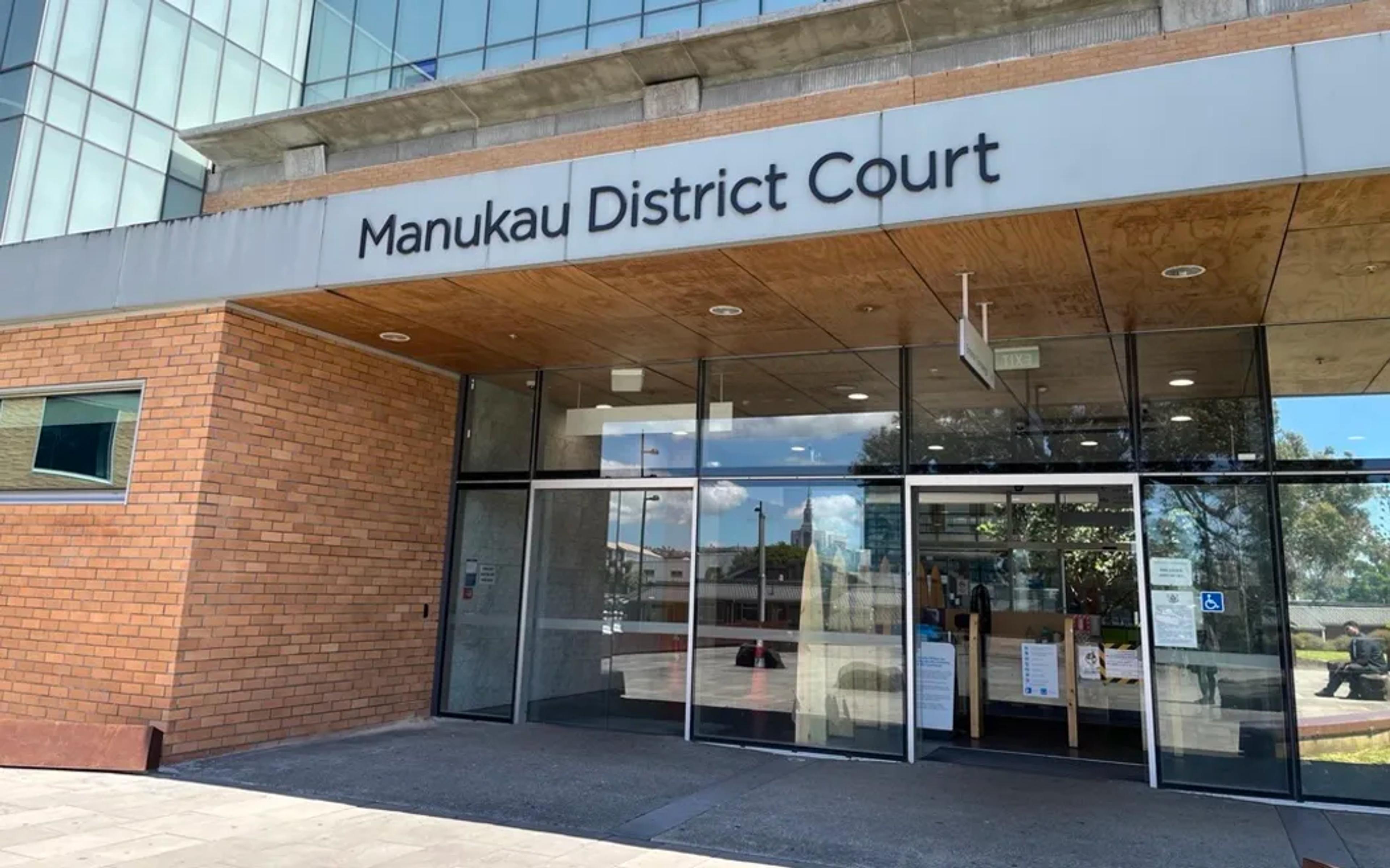
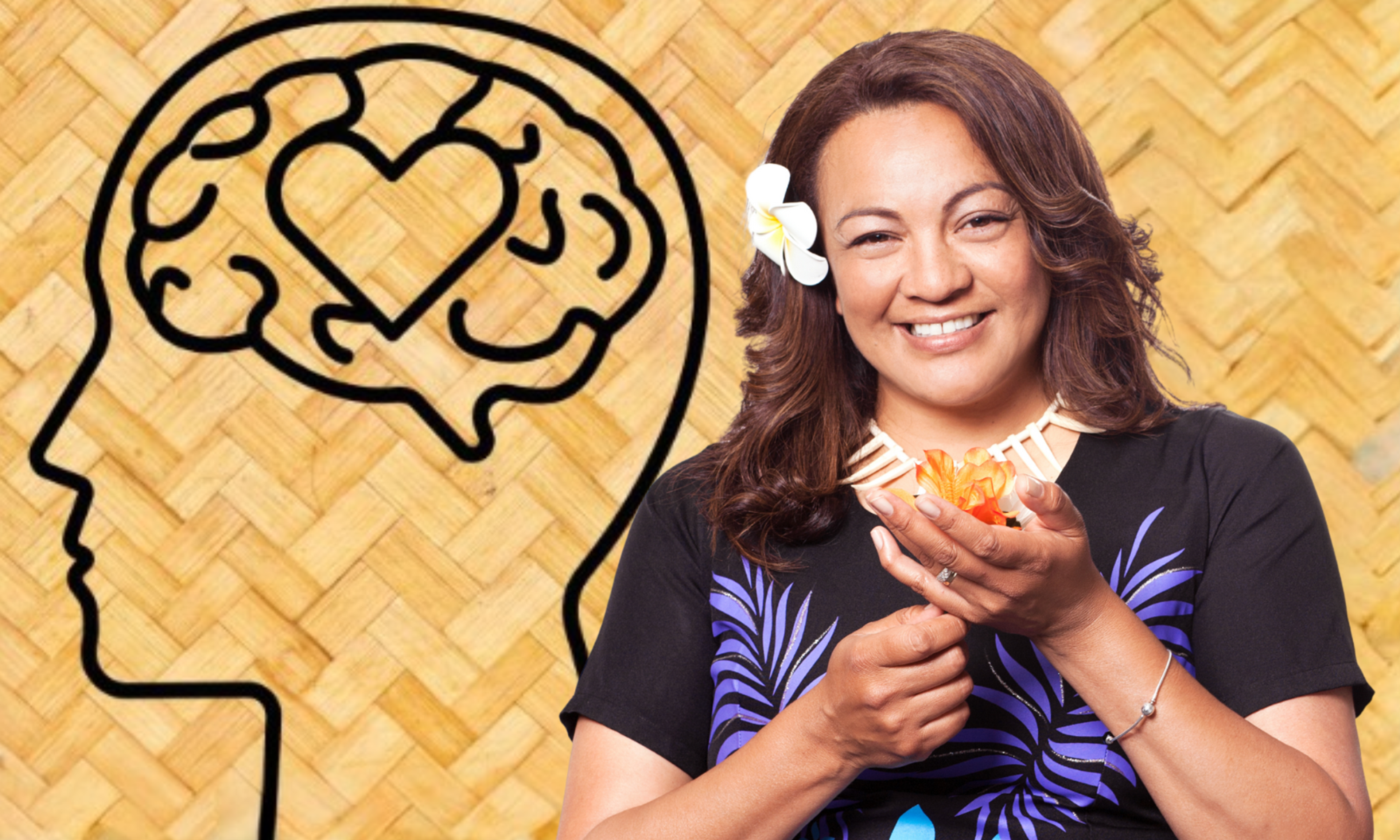
Le Vā senior manager for Suicide Prevention - Pacific, says there is hope and strength in Pacific families and communities.
Photo/Supplied/File
Pacific suicide rate falls slightly, but experts warn work remains
Pacific analysts urge continued investment in culturally appropriate prevention programmes and community support.


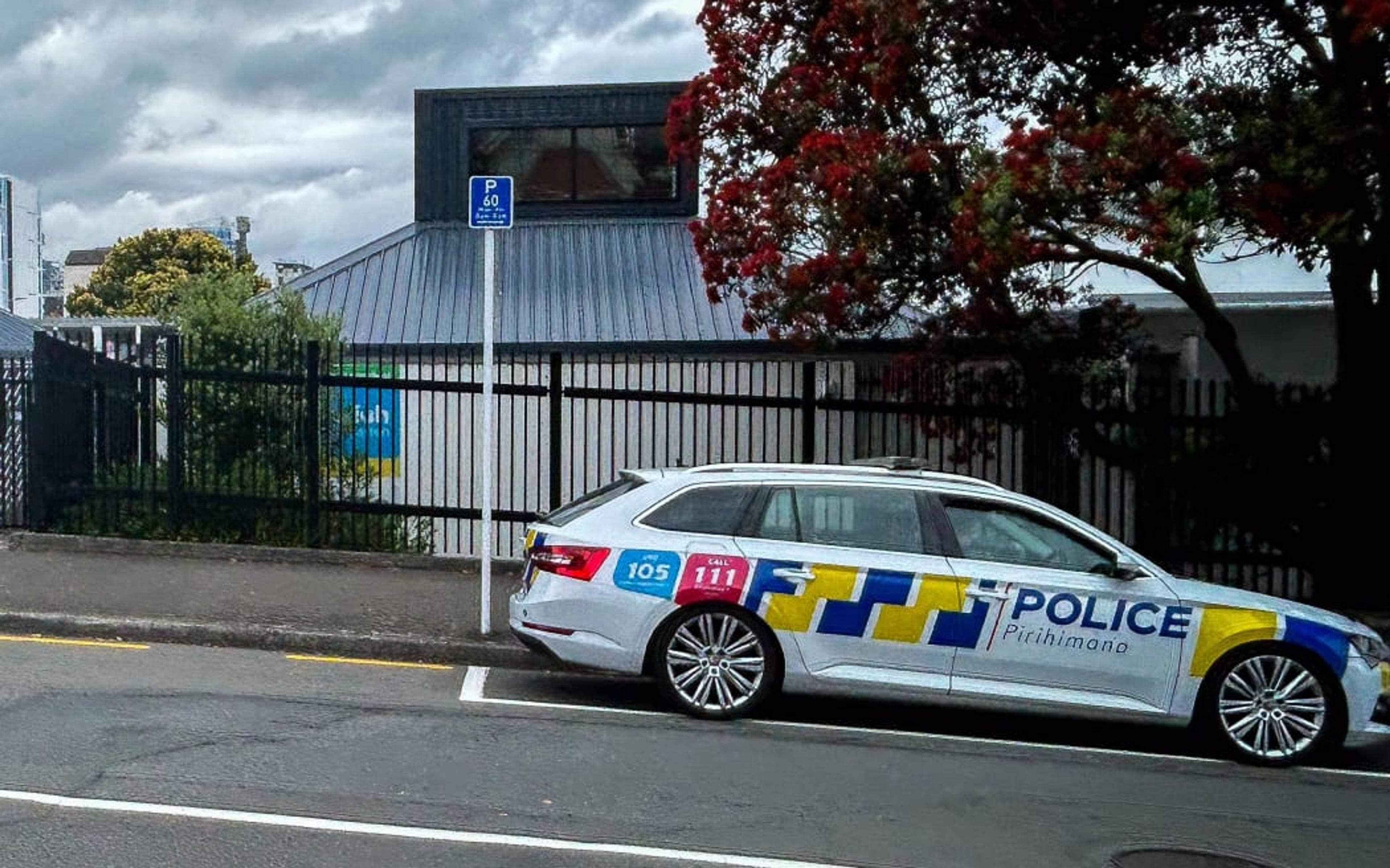

Pacific research marks 25 years of tracking children into adulthood
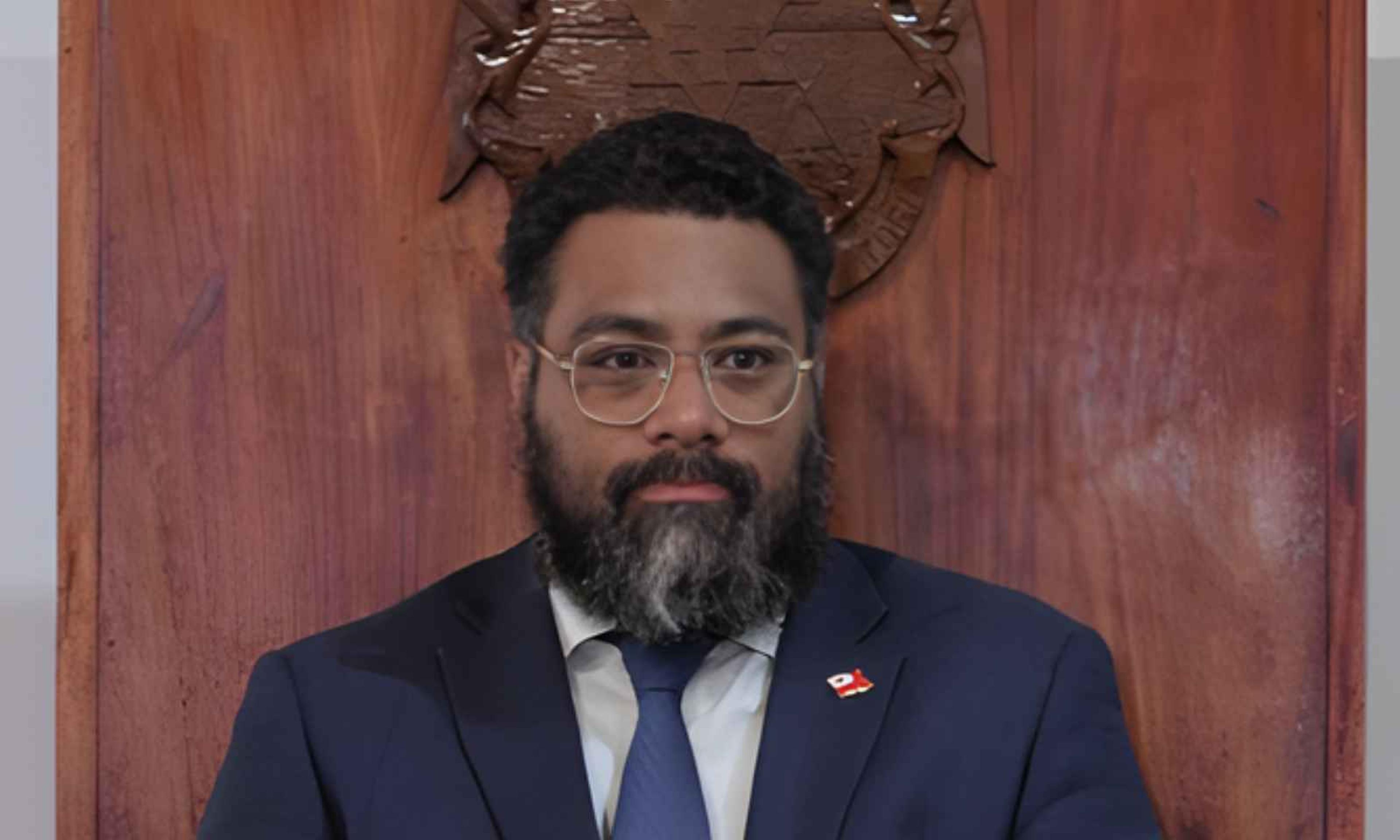
Tonga’s new PM sparks wide debate amid praise and concern




Pacific research marks 25 years of tracking children into adulthood

Tonga’s new PM sparks wide debate amid praise and concern
This article contains discussions of suicide and mental distress.
The latest provisional suicide statistics released by the Coroner’s Court show a slight decrease in suspected deaths among Pacific people. But experts warn there is no room for complacency.
On Thursday, the Coroner’s Court reported 630 suspected self-inflicted deaths across New Zealand from June 2024 to July 2025, resulting in a rate of 11.0 per 100,000 people. Among Pacific communities, the suicide rate has fallen slightly from 7.7 to 7.4 per 100,000.
Leilani Clarke, senior manager for suicide prevention at Le Vā, says despite the trend, the figures hide the human cost.
“Behind every statistic, there's a grieving family that's lost someone to suicide,” she says. “If we think about it over a period of 16 years, we're relatively stable; it's not worsening, but it's not improving either. It just indicates to us that we really need to do a lot more work in this space.”
Clarke identifies social, cultural, and economic pressures as key factors contributing to distress in Pacific communities.
“We’ve got people who are really worried about housing insecurity or access to affordable health care, even financial stress,” she says. Just having that ability to try and simply get by, it actually can erode that hope, particularly for our young men and our young adults who feel that pressure to succeed or provide for their families.”
She also highlights the protective role of family, community, and faith in suicide prevention, and urges family members to be vigilant in recognising and responding to warning signs such as changes in behaviour, sleep patterns, dietary habits or withdrawing from family.
“Phrases like ‘attention seeking’ have such a negative connotation,” she says. “But if we flip the script and say ‘attention needing’, then our ears and eyes are more open to identify these kinds of warning signs that someone really is struggling.”
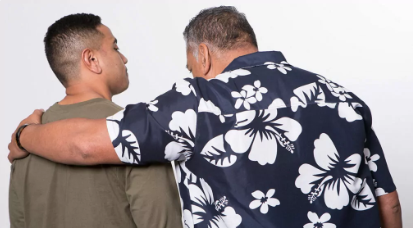
The suspected suicide rate for Pacific communities is decreasing, but advocates say more needs to be done.Photo/Le Vā
While the overall number of deaths has increased nationally, the current rate represents a 3.1 per cent decrease compared to the 16-year average.
Chief Coroner Judge Anna Tutton offers deep condolences to the families and friends of those who have died as a result of suspected suicide.
“Suicide is a complex issue, driven by a range of factors,” Tutton says. “Coroners continue to highlight support services available in the hope that greater awareness will encourage people to seek help for themselves or others struggling with their mental wellbeing.”
In the data from the Coroner’s Court, Māori males continue to have the highest rates of suspected suicide, at 28.1 per 100,000, which is roughly double that of non-Māori males.
Shaun Robinson, Chief Executive of the Mental Health Foundation, says the figures are deeply concerning.
“The MHF continues to stress the urgent need for ongoing suicide prevention efforts grounded in kaupapa Māori principles, supported by appropriate funding,” he says. “Suicide prevention initiatives must be equitable, culturally responsive, and accessible to all throughout Aotearoa,” he says in a statement.
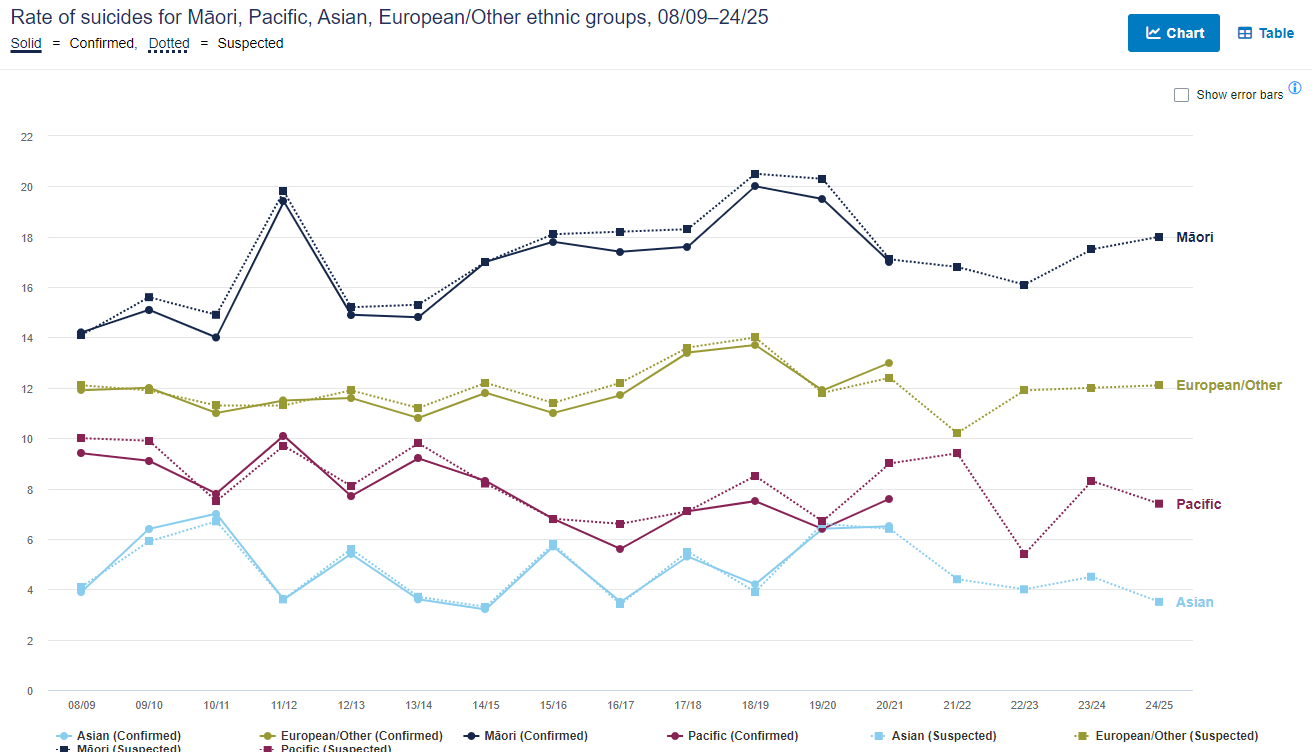
The suicide rate for Pacific communities decreased slightly in the last year. Image/Te Whatu Ora
A plan for the future
The Ministry of Health’s Suicide Prevention Action Plan, launched earlier this year, includes 21 health-led and 13 cross-agency new actions aimed at preventing suicide.
These include peer support roles in hospital emergency departments, crisis recovery cafés, and community-led initiatives.
Clarke highlights the importance of educational and awareness programmes, such as Le Va’s Flo: Pasifika for Life and Life Keepers initiatives, which train both the workforce and communities to recognise signs of distress.
She urges Pacific communities to remain vigilant and supportive during challenging times and encourages those affected by suicide or mental distress to access support services.
“We teu le vā, we nurture our relationships, because connectedness is a key thing for us as Pacific,” she says. “And when we stay connected, we stay protected. There is hope out there, there is support out there … There’s always hope and help.”
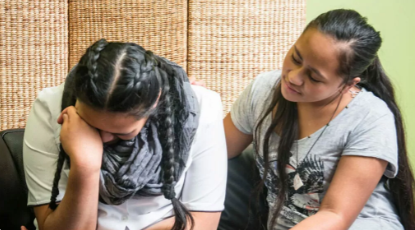
Experts urge families to be vigilant and notice changes in a person's behaviour. Photo/Le Vā
Where to get help:
Need to Talk? Free call or text 1737 any time to speak to a trained counsellor, for any reason
Lifeline: 0800 543 354 or text HELP to 4357
Suicide Crisis Helpline: 0508 828 865 / 0508 TAUTOKO. This is a service for people who may be thinking about suicide, or those who are concerned about family or friends
Depression Helpline: 0800 111 757 or text 4202
Samaritans: 0800 726 666
Youthline: 0800 376 633 or text 234 or email talk@youthline.co.nz
What's Up: 0800 WHATSUP / 0800 9428 787. This is free counselling for 5 to 19-year-olds
Asian Family Services: 0800 862 342 or text 832. Languages spoken: Mandarin, Cantonese, Korean, Vietnamese, Thai, Japanese, Hindi, and English.
Rural Support Trust Helpline: 0800 787 254
Healthline: 0800 611 116
Rainbow Youth: (09) 376 4155
OUTLine: 0800 688 5463
Aoake te Rā bereaved by suicide service: or call 0800 000 053
Listen to Dr Sione Vaka's interview below about FLO: Pasifika for Life programme.